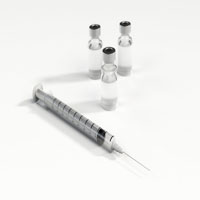Allergic reactions due to concomitant administration of multiple drugs in intravenous fluid in emergency departments in Turkey

Accepted: 16 August 2021
All claims expressed in this article are solely those of the authors and do not necessarily represent those of their affiliated organizations, or those of the publisher, the editors and the reviewers. Any product that may be evaluated in this article or claim that may be made by its manufacturer is not guaranteed or endorsed by the publisher.
Authors
The present study aimed to evaluate patients who were referred to adult allergy clinic due to allergic reactions after concomitant multiple intravenous-drug administrations in Emergency Department (ED). Between January 2017 and January 2019, patients admitted to our allergy clinic with hypersensitivity reactions to intravenous drugs administered in ED were included retrospectively. Fifty-seven patients who developed allergic reactions after intravenous drug administration in EDs were evaluated. Nonsteroidal Anti-Inflammatory Drugs (NSAIDs) were the most common cause of allergic reactions (n = 40, 70.2%). Skin Prick Tests (SPT) were positive in 6 (10.5%) patients. Drug Provocation Tests (DPT) were positive in 10 (17.5%) patients. No significant correlation was found between the total number of drugs in the intravenous fluid and the degree of allergic reaction (r = -0.145, p = 0.282). There was no statistically significant difference between the degree of allergic reaction and history of atopic disease (p = 0.579). In conclusion, concomitant administration of multiple drugs in intravenous fluids may increase the risk of allergic reactions.
How to Cite
PAGEPress has chosen to apply the Creative Commons Attribution NonCommercial 4.0 International License (CC BY-NC 4.0) to all manuscripts to be published.

 https://doi.org/10.4081/ecj.2021.9848
https://doi.org/10.4081/ecj.2021.9848








